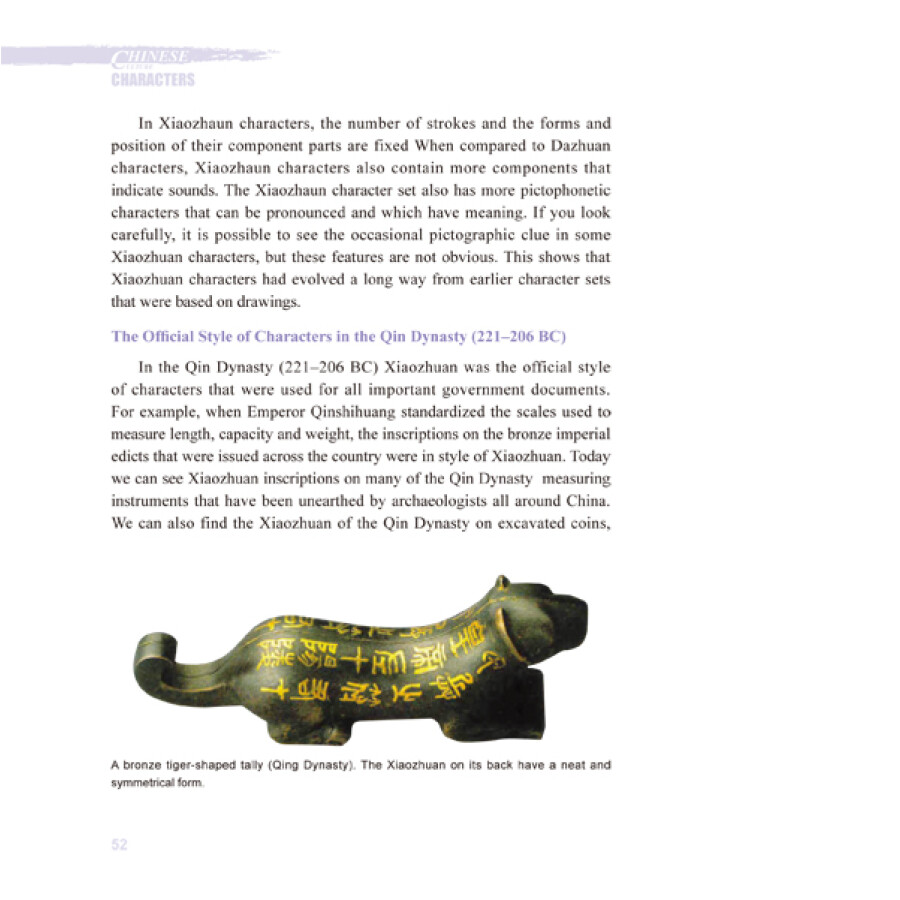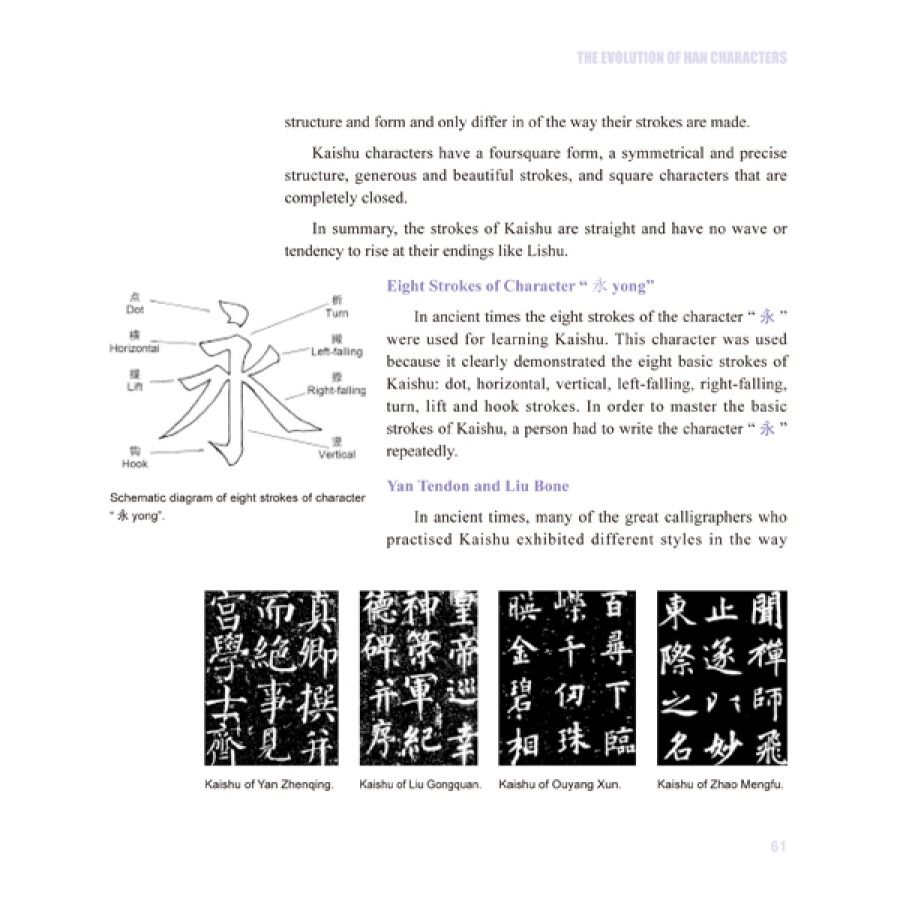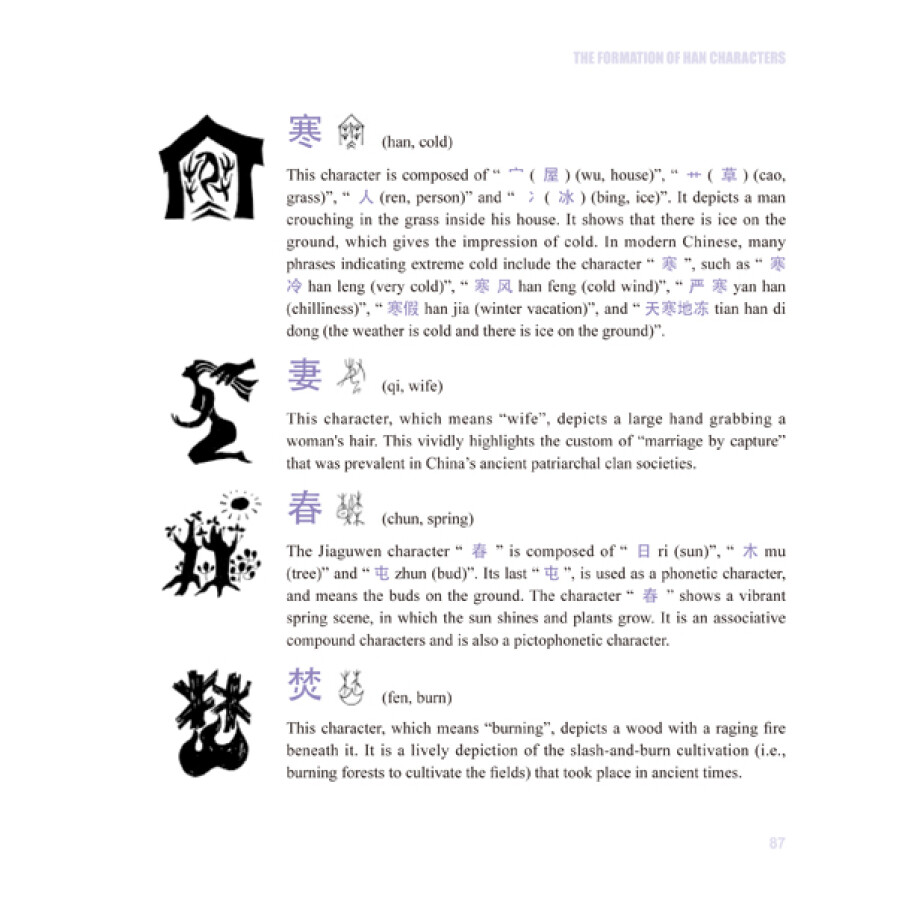Contents
Preface
The Dawn of Civlization
The Graphic Characters of
the River Civilization
The Fate of the Graphic Characters of the River
Civilization
Using Pictures to Express Ideas
The Origin of Han Characters
Legends from Ancient Times
Discovering the Origins of Han Characters
The Evolution of Han Characters
Ancient Drawing-like Characters
The Development of Modern Characters
The Main Aspects of the Development of Han Characters
The Formation of Han Characters
The Development of the “Six Categories”
How Han Characters were Formed
The Form and Structure of Modern Han Characters
The Square Form of Han Characters
The Mystery of Modern Han Characters
Pictographic Elements in Modern Han Characters
The Use of Pictographic Elements in Modern Han Characters
Han Characters and the Chinese Language
Why Han Characters are Well Suited to the Chinese Language
Han Characters Are the Basic Structural Units of the Chinese Language
The Word-making Ability of Han Characters
Han Characters Bridge the Gap Between Dialects and Eras
The “Sinosphere”
Chinese History Told in Han Characters
China in Ancient Times
China’s Ancient Civilization Shown Through Han Characters
The Art of Han Characters
The Calligraphic Art of Han Characters
Famous Calligraphic Treasures
Commercial-art Han Characters
The Seal Art of Han Characters
Stepping into the Information Age
The Computerization of Han Characters
Fears and Worries for Han Characters in the Information Age
Using Pictures to Express Ideas
Drawings are a direct and convenient way to express simple ideas. Early man therefore used drawings to communicate and it was only after a long period of history had passed that drawings evolved into more abstract and symbolic characters that could be read and enunciated as speech.
Rock Paintings for Recording Events
Long before the invention of characters, early human societies in both the East and West recorded events using drawings that they engraved or painted on rocks. These have become known as the rock paintings. Rock paintings were the earliest method humans used to record events and those that have been preserved are the oldest paintings in existence. Rock paintings represented the greatest artistic achievements of Stone Age society. So far, rock paintings have been discovered in more than 120 countries and regions all around the world. Examples include the famous cave paintings in Altamira in Spain and in Lascaux in France. Rock paintings have also been found in many places of China. They all vividly bring to life the mysterious, primitive world of some of our earliest ancestors. Surprisingly, some rock paintings from 10,000 years ago show an extremely high level of artistry. Many of the rock paintings found in China include patterns and symbols, some of which resemble pictographic characters used in later times.
Despite their artistic merit, rock paintings expressed a narrow range of meanings that had no direct relation to language and had no spoken equivalent. They were not symbols that were used to widely spread information, so they cannot be thought of in the same way as written characters. That said, rock paintings did illustrate natural things and human activities and expressed meaning visually. In other words they were used as a way of recording events. It has been confirmed that rock paintings did develop to represent ideas (e.g. people hunting animals) and that, although were not themselves characters, they did play a role in the creation of later characters, especially pictographs. Thus, we can say that Chinese rock paintings were the earliest ancestors of Han characters.
Pottery Paintings for Recording Events
During the Neolithic Age, the pottery of some ancient Eastern and Western civilizations was decorated with simple and unvarnished paintings. These pots were some of the earliest items created by human using natural products and are a key symbol of the Neolithic Age.
The Yangshao Culture existed some 6,000 years ago. During this era, earthenware was produced in the area drained by the Yellow River. This pottery was decorated with drawings and patterns. These drawings and patterns were simple, unvarnished, vivid and interesting. Many of those that have survived show that the people who made them were skilled painters with a strong sense of design. As the drawings on this type of earthenware were colored in black, red and white, these pottery items have become known as “painted pottery”. They are the most numerous and most characteristic cultural product from the period of the Yangshao Culture. The Yangshao Culture is therefore often referred to as the “culture of painted pottery”.


